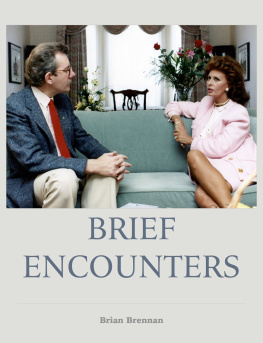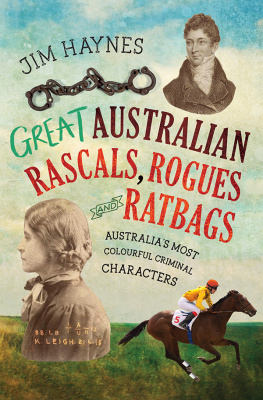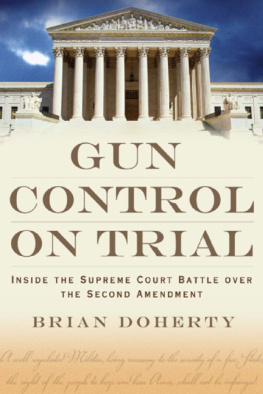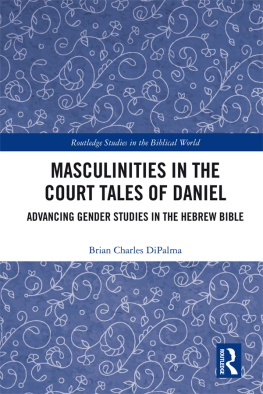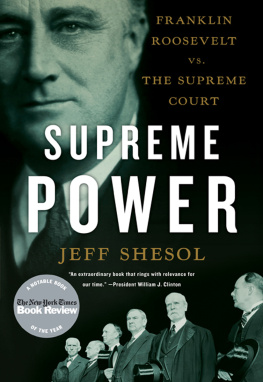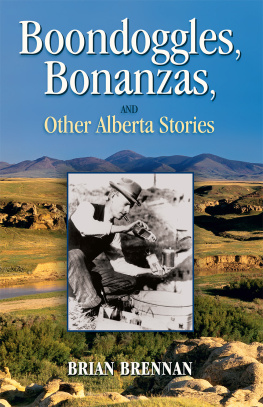Scoundrels
and
Scallywags
Scoundrels
and
Scallywags
Characters from
Albertas Past
Brian Brennan
Copyright 2002 Brian Brennan
All rights reserved. No part of this publication may be reproduced, stored in a retrieval system, or transmitted, in any form or by any means, electronic, mechanical, recording, or otherwise, without the prior written permission of the publisher, except in the case of a reviewer, who may quote brief passages in a review to print in a magazine or newspaper, or broadcast on radio or television. In the case of photocopying or other reprographic copying, users must obtain a licence from the Canadian Copyright Licencing Agency.
Cover photograph, William Wild Bill Peyto, Glenbow Archives NA-1438-1
Cover background photograph by Alec Pytlowany / Masterfile
Cover and interior design by John Luckhurst / GDL
E-book conversion by Human Powered Design
First published, in print, by Fifth House/Fitzhenry & Whiteside
E-book published by: Brian Brennan
First published in the United States in 2003.
National Library of Canada Cataloguing in Publication Data
Brennan, Brian, 1943
Scoundrels and scallywags
Includes index.
ISBN 978-0-9782739-2-7(EPUB)
1. AlbertaBiography. 2. AlbertaHistoryMiscellanea. I. Title.
FC3655.B736 2002 920.07123 C2002-911002-5
F1075.8.B73 2002
To Zelda and Nicole
my beloved companions on the journey
and to
Maud and Jack
who gave me the wings to fly
Introduction
We cant give them knighthoods, like the English have done with such bad-boy rockers as Sir Mick Jagger and Sir Elton Johnin Alberta we like to honour our scoundrels and scallywags in other ways. Nowhere is this more evident than in Fort McMurray, where a street and a shopping mall are named after Peter Pond, an eighteenth-century American adventurer, fur trader, and confessed murderer forced to leave the Athabasca region in 1788 after the death of a fur-trading opponent named John Ross. As writer Aritha van Herk perceptively observed, Peter Pond fits right into the tradition of this province, long before anyone could have predicted the maverick place it would become.
John Rowand, who today is commemorated at Edmontons historic Fort Edmonton Park, was another white hustler who caught the scrappy spirit of Alberta long before it was declared a province of Canada in 1905. A burly Hudsons Bay Company factor who ruled with his temper and his fists, the scoundrelly Rowand controlled a huge fur-trading empire for thirty years from his palatial headquarters at Fort Edmonton. He was characterized admiringly by his bossthe Hudsons Bay governor Sir George Simpsonas one of the most pushing, bustling men in the service.
Another park in Edmonton honours the misguided William Hawrelak, the eternal boomerang of Alberta municipal politics, twice forced to quit the mayors office because of questionable land dealings. A provincial building is named after the indiscreet John Brownlee, the disgraced premier who left office after a jury convicted him of seducing a twenty-two-year-old government secretary. In Calgary, the tradition of giving white hats to visiting celebrities is done in the name of blustering Don Mackay, an ardent civic booster and municipal politician who lost his job as mayor after it was revealed that he had used thirty-five bags of city-owned cement to pour the basement of his holiday home in Banff. In the Rocky Mountains, a peak is named after Wild Bill Peyto, a legendary prospector and trapper who, it is said, once let a lynx loose in a Banff saloon just to see how quickly the drunken patrons could get to their feet. Another peak is named after General Thomas Strange, an eccentric British army officer who led a ragtag force of Alberta cowboys, scouts, and mounted police to fight in the Riel Rebellion. In Blairmore, a left-leaning town council once voted to rename the towns main street in honour of Tim Buck, the one-time leader of the Communist Party of Canada. Theres no evidence that Buck ever actually lived in Alberta, but he was a popular speaker at miners meetings in Canmore and the Crowsnest Pass during the 1920s and 1930s.
I have been drawn to these people who dared to live outside the boundaries of convention ever since I arrived in Alberta in 1974. When I worked as a journalist in Calgary, I always found it more interesting to write about a fringe mayoralty candidate like the convicted felon Jimmy the Con Carleton or about the malapropism-spouting alderman John Kushner, than about the more sober, more earnest figures on the local public scene. The latter undoubtedly did good works for their community, but they always seemed, even on colour television, to be tinted in various shades of grey.
Some readers may wonder about the selection criteria I used for the people profiled in this book. What brings a loud and abrasive but otherwise inoffensive alderman like Edmontons Julia Kiniski together with a convicted murderer like Emilio Picariello, or a doomed country singer like Tommy Common, or a determined hatemonger like the Ku Klux Klan leader John James Maloney? Who are the scoundrels and who are the scallywags? And what exactly is a scallywag? Well, heres where you can have some fun with the language, because scallywag happens to be one of those delightfully enigmatic words that Humpty Dumpty might have been thinking about when he said to Alice in Through the Looking Glass , When I use a word, it means just what I choose it to meanneither more nor less.
Nobody seems to know for sure where the word scallywag first came from or what its etymology might be. Nineteenth century U.S. slang of unknown origin, says my Concise Oxford Dictionary brusquely. It defines the word (with alternative spellings of scalawag and scallawag) as a good-for-nothing person, scamp or scapegrace. Another dictionary defines scallywag as a rascal or rogue. Im rather partial to that last definition myself because it inspired our stage name when a friend and I toured Canada in the 1960s, singing Irish parlour songs and calling ourselves the Dublin Rogues.
As examples in this book of scallywagsrascally or roguish or eccentric individuals who resisted being stereotyped, domesticated, branded, ignored, or taxedI would draw your attention to the charming story of the rancher from Priddis, Fred Perceval, who decided he would prefer to live in obscurity among cattle and horses in the grasslands of southern Alberta rather than ascend to the House of Lords when he became Englands eleventh Earl of Egmont. Or consider the chutzpah of gregarious cowboy showman Guy Weadick, who sued the Calgary Stampede for wrongful dismissal after he was fired for excessive drinking, and who actually succeeded in convincing a judge that drinking was part of his job as Stampede promoter. And how could one fail to be engaged by the story of the two eccentric hillbilly King brothers from the Porcupine Hills, who chose to live like paupers on a ranch that was worth millions of dollars?
This is a book about people who dared to be different, characters who were either bad or good, naughty or nice, notorious or obscure, and who definitely would not tolerate being ignored. Some of the stories are cautionary tales about the dangers of alcohol. If booze had never touched their lives, Blackie Audett might not have become a bank robber, Emilio Picariello could not have become a bootlegger, Dorothy Joudrie might not have shot her husband, and Darcy Scott might have enjoyed a long career in radio. Some are stories about public performers, inveterate attention-seekers, politicians, and entertainers who lived by the Oscar Wilde maxim that the only thing worse than being talked about is not being talked about. Some are stories about the very strange folks who put the lie to the notion that Britain is the only place in the world where people are allowed to talk to trees and put lemonade in their beer.


